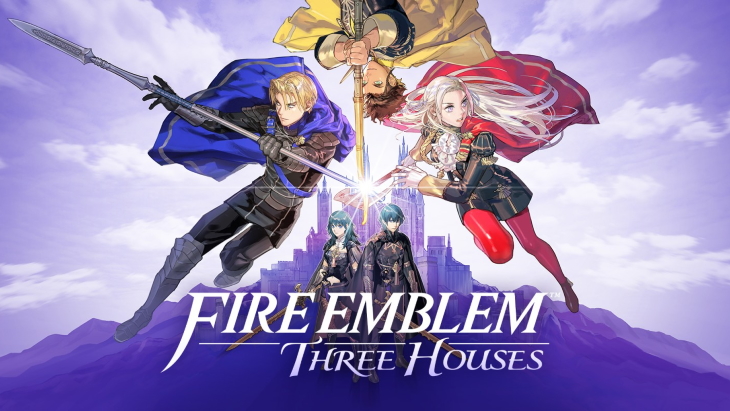
While the Fire Emblem franchise started on the NES in Japan, it came to the west during the Game Boy Advance era, quickly cementing itself as one of the major JRPGs. While Fire Emblem Awakening and Fire Emblem Fates divided some, Fire Emblem Echoes: Shadows of Valentia went back to basics. Now the latest title – Fire Emblem: Three Houses, incorporates elements from past games while introducing new twists. Has it seized the day, or fallen on its sword? Read on to find out!
Fire Emblem: Three Houses
Publisher: Nintendo
Developer: Intelligent Systems, Koei Tecmo Games Co., Ltd.
Platform: Nintendo Switch (Reviewed)
Release Date: July 26th, 2019
Players: 1
Price: $59.99
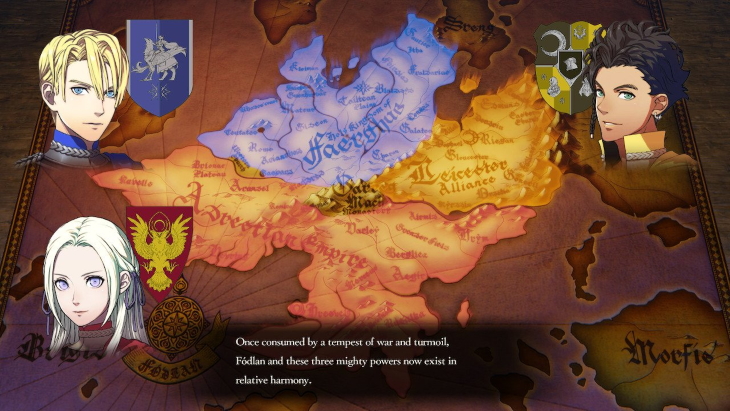
The plot in Fire Emblem: Three Houses is focused on politics, warfare, and the nations’ histories and grudges- combined with fantasy concepts of ancient beings and special individuals. Though it can be a little predictable (some characters raise blatant red flag), it is nonetheless an enjoyable story to experience.
After rescuing the heirs to the land’s three major kingdoms, you are whisked into service at the officer’s academy and monastery run by the major religion. On top of this, you meet a strange spirit-like girl who’s past seems to be just as mysterious as your own. Soon your duties as a professor involve far more, as events shatter the peace and conspiracy abounds.
There are plenty of endearing characters, and the stories test the heirs’ morals and beliefs as a trial by fire. It is fascinating to see how they act and react, and it makes you keen to experience the other houses to see new perspectives on events.
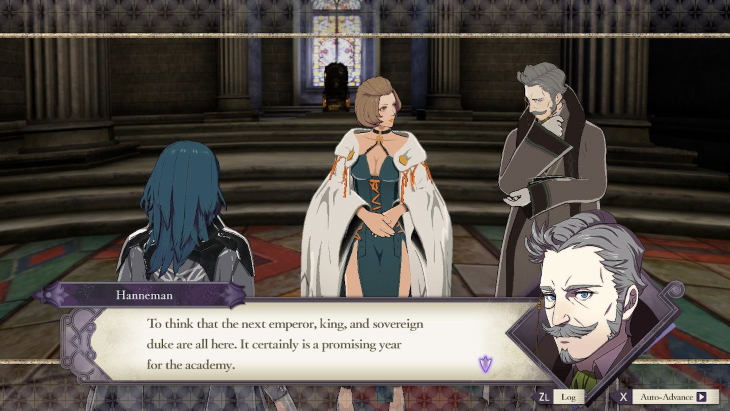
For those worried about cringe-worthy characters- as Awakening and Fates were accused of- you can rest a little easier. While some can be surface-level, attempts are made to flesh them out. Even the oddballs contribute to dramatic scenes.
Nearly all your party speaks during a chapter, making it feel like they have a stake in what is happening. Whether it be discussing a plan, showing horror when they kill certain people, or even objecting to their future ruler’s methods.
Some games were also accused of pandering via player-insert characters being too blatant a power-fantasy. While this is somewhat true here, it never becomes conspicuous thanks to the above. In a world where some wield powerful weapons or can enter positions of power, the spot-light feels more evenly shared.
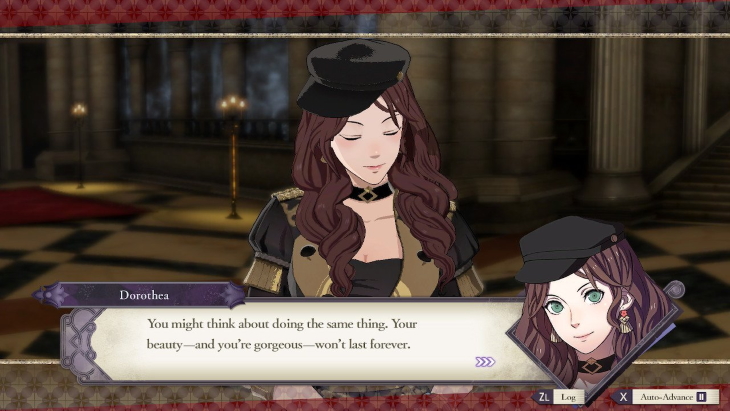
You can romance nearly every party member. Though the cast is not immediately enamored like other titles, it can still feel unnatural. This applies to nearly any couple however; jumping from platonic A rank to the confessions and proposals of S rank. Despite this, most relationships still make sense.
Dialogue and localization have also improved from shakier entries; nothing feels out of place for the setting. Extra lines have been added compared to the original Japanese, but these are in-character and typically fit. While you will not have to endure anything like “Rawr is dragon for I love you”, the game still uses anime tropes (without everyone at extremes).
You will not be jumping from battle to battle like the classic games, especially with the academy segments. Even so, cutscenes are no longer than your typical JRPG (with auto-advancing text if you wish) and conversations never go in circles like some JRPGs do.
The overall narrative has been well executed. All the stories have had equal care put into them, characters feel a little more grounded (overall), and have likable personalities.
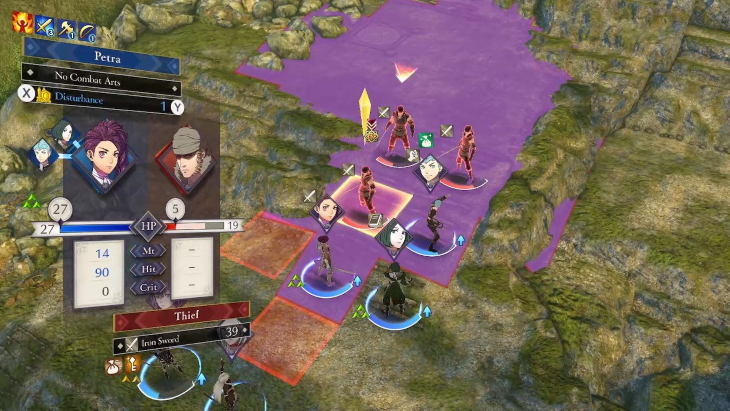
Gameplay in Fire Emblem: Three Houses is divided between the academy and the battlefield. Battles keep most of the basic mechanics of past games, using a selection of units to complete an objective. While perma-death returns, there is a setting so they are only removed for that battle.
Weapon durability is back, but the “weapon triangle” is gone. Instead you have combat arts, expending more durability for special effects-extra damage to specific enemies or weapons like the classic triangle, moving units around, or debuffing them.
Combat Arts usually work best to kill off or hinder powerful units, or allow weaker units contribute. The durability cost is reasonable enough to discourage spamming them. Combined with how a unit can only equip three combat arts at once, it gives you more to consider when preparing for battle.

Some characters can gain “Relic Weapons” with powerful combat arts. Unfortunately, they require some rather rare materials to repair them (weapons can be repaired and upgraded this time around). While you can rest in the academy to repair a mere five point, it wastes actions that could be used in numerous better ways.
This means they are too powerful and costly to use freely. Further, killing enemies in one shot means less attacks and less experience to share around. As such the weapons you can buy or find usually suffice unless something needs to die immediately.
Magic spells are no longer equipment, instead learned as a character improves their reason or faith skills. While they have a limited number of uses per battle, magic-users quickly gain a wide-variety of spells and more uses of each. The change was unneeded, but not unwelcome.
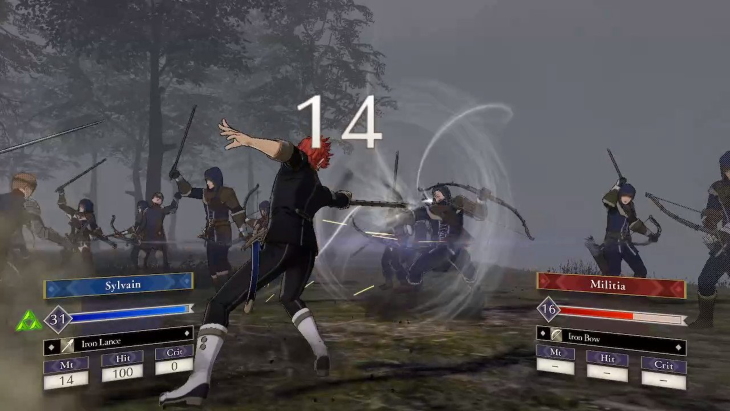
Another new feature is battalions. Along with stat bonuses, they allow the use of gambits- special attacks you can only use a few times per battle. They can reduce an enemy’s stats by 10% for a turn, along with other effects (stopping movement, or attacking multiple enemies at once). While they can be die if a unit takes too much damage, I never ran into this risk myself.
Even though battalions are useful, they are only essential for Demonic Beasts. Even then combat arts can be used as a substitute. There is no reason not to use them, but you could still win a battle without them with careful planning.
“Linked attacks” also offer small aid. If an ally could attack an enemy (even if it has already had its turn), attacks against that enemy will have bonus damage and accuracy. It also has a chance to power-up gambits, turning low-accuracy ones into something more viable. It can help a weaker units, but contributes to making things too easy.
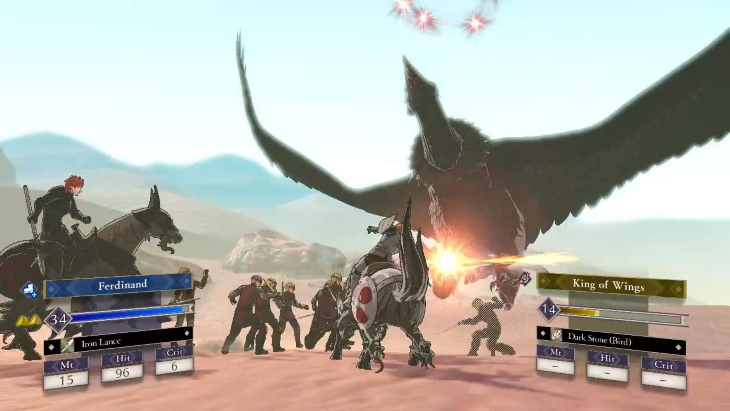
“Pairing up” from past games is a little different. Now benched units are “equipped” to someone in battle. This offers a chance for them to be healed, blocking damage, or an additional attack based on those character’s support level.
This is mismatched, as units build support fighting side by side. So you trade away two reasonably leveled units, for one that might live longer. It hardly seems worth the sacrifice, so you are usually better off using any random unit for fragile characters.
Another flawed addition are Demonic Beasts, large creatures with multiple health bars. On paper, they gain more abilities as they lose health, have barriers that need to be shattered by special attacks (stunning them and earning loot), and use their own special attacks to strike multiple targets.
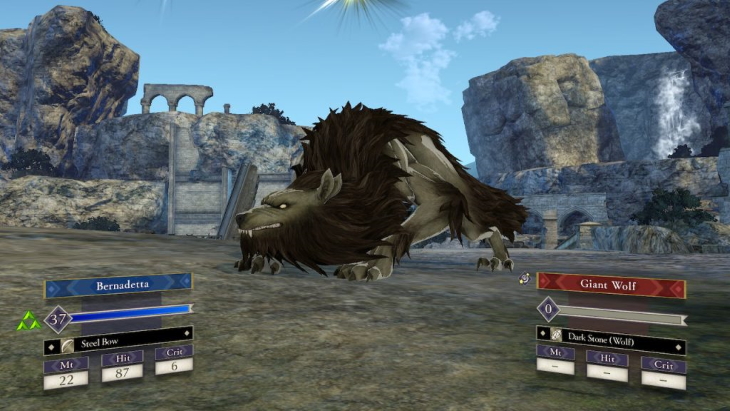
However, many gambits can strike multiple squares. Assuming you have enough units to focus on it, you can easily shatter all barriers and annihilate it in one turn. It is little wonder the game quickly includes multiple enemies alongside them for more of a challenge- even utilizing multiple beasts at once.
A lack of challenge is a recurring issue. Most enemies simply wait for units to come into their range of movement and attack.This has been an issue in past games, but Three Houses adds something that almost removes any risk of advancing.
Before you commit to moving a unit, you get indicators of what enemies will attack them. Likewise, each enemy unit can be highlighted to see their target, along with potential damage and hit chance. Despite prioritizing maximum damage and minimum counter-attack damage, enemies usually ignore terrain bonuses and ally abilities.
Combined with less risk from the absent weapons triangle, and most maps having no choke points, normal mode is too easy- even for those new to the series. Hard mode attempts to alleviate some issues, but only by making enemies stronger and giving bosses more abilities. A higher difficulty is coming via a future update.
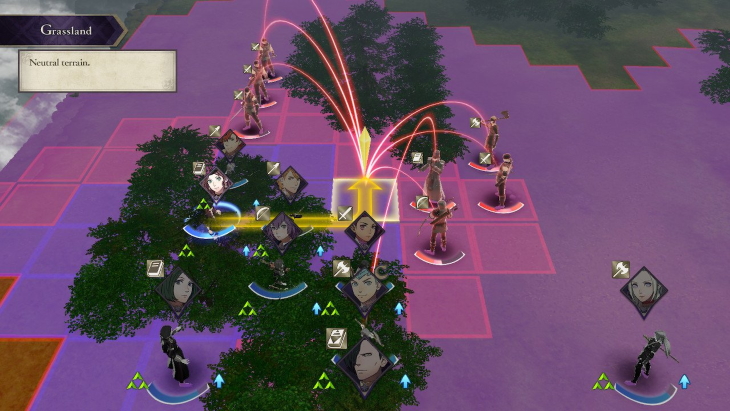
The new features for improving ease-of-use function much better. The battle preview window prior to attacking lets you change weapons and combat-arts freely, you know exactly how much skill and class experience you gain from battles, and enemies that will drop items are marked.
One of the best new ease-of-use is the Divine Pulse, letting you rewind time up to a few times during a battle. Should you make an error, you can rewind any number of turns- even to the start of the battle. While this is supposed to be used when a character dies over resetting, it does have an unintended use.
Every attack seems to be calculated at battle’s start, so you cannot re-roll via the rewind. This also includes critical hits. Along with preventing a random critical robbing another unit of a kill, it can be redirected to kill off intentionally over-leveled enemies on some maps (gaining rare items to boot). That aside rewinding is useful, though it can strip the punishment of death away too much.
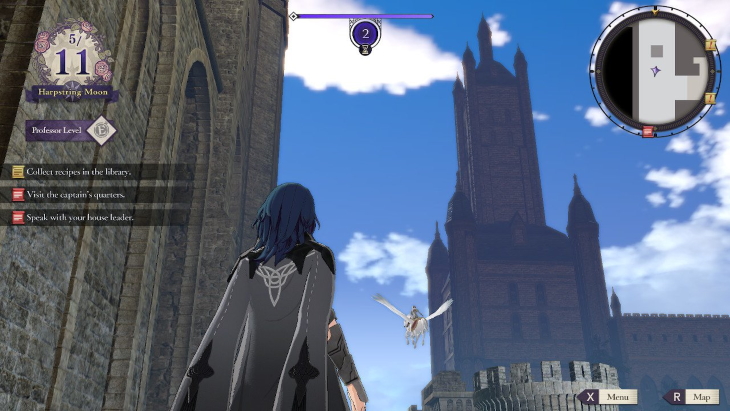
Combat in Fire Emblem: Three Houses is only one half of Three Houses, but far less of total gameplay time. While the academy segment is not as drawn-out as similar mechanics in games like Persona, you will probably spend up to two-thirds of your time in the academy.
The academy offers many ways to improve your army. Each chapter takes place over a month, with a story battle on the last day. Every Monday you decide how you teach. You then skip to the weekend, where you can spend your free time in a variety of ways.
Nearly every action here increases your “professor skill,” which grants you more monthly funds and allows you to perform more actions. As your capabilities slowly expand, it makes you eager to achieve ever expanding goals.
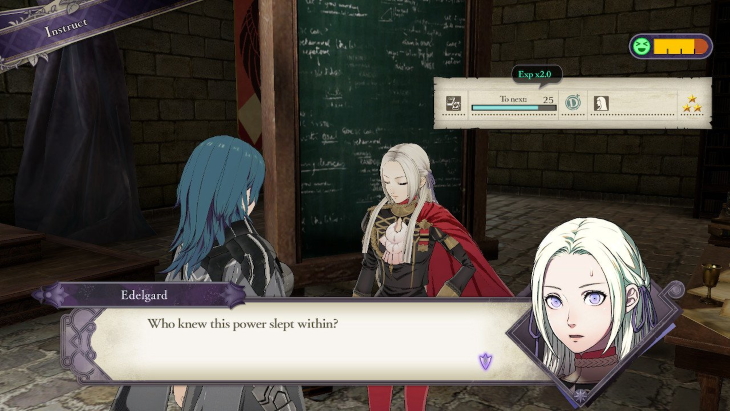
Teaching involves selecting up to two skills for each character to gain experience in (depending on their proficiencies). You can also spend your student’s motivation to give direct tutelage, further boosting skills of your choice. Motivation encourages you to give presents and eat meals to get the most out of students, which increases your professor level, so you can tutor your students more.
Some students have a “budding talent” in a skill. Raising it enough unlocks an ability or combat art. These are typically quite powerful- such as reducing the stats of a foe you just attacked, or gaining stats when using a particular weapon.
The vast majority of these complement the character no matter the class they are. Some issues arise for weapon-focused units with a budding talent in magic. This usually results in a bonus when using magic. Even with late-game classes that use both weapons and magic, most of those characters have average magic stats and do not learn higher level spells. Since you do not know what you unlock, you can feel like you have wasted time and resources.
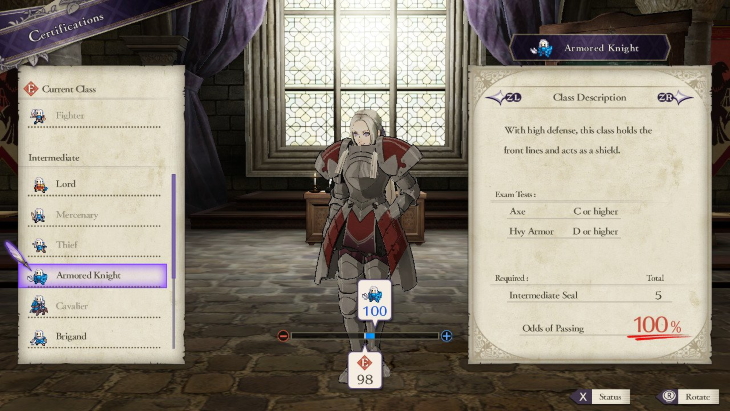
Units must now take an exam to change their class. If they meet all the requirements- such as a thief needing a unit to be level 10 and a C rank in swords- they will gain access to the class (freely changing between those unlocked).
You can even attempt the exam if the unit does not meet the requirements. So if a unit only has a D+ in swords, they will have a 66% chance to pass. If they require multiple skills, they can compensate for being too low in one by being higher in the other.
Whether they pass or not seems to be decided on that day, and cannot be save-scummed. Reports that failure can be save-scummed with a slim chance (ignoring the actual pass chance) were tested. It seems this may be false, or so slim it is not worth it.
Units gain class experience in battle, earning an ability once the class is mastered. These abilities are less overpowered then past games. The vast majority are related to stat boosts, buffs under certain criteria, and debuffing enemies. Along with the slow rate of mastering, it can discourage “class hopping” just to get an ability. Overall, you still have unparalleled control over how your characters develop.
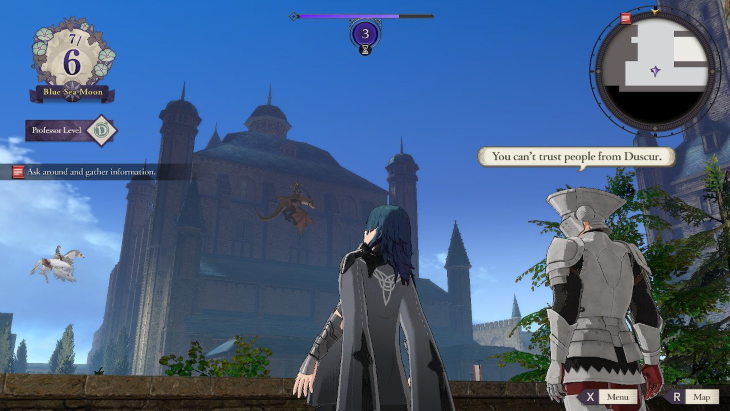
Your free time in the academy can be spent organizing a seminar (boosting multiple skills for certain characters), battling (as many times as you like at normal difficulty), resting (to boost all your character’s motivation), or most importantly: exploring the monastery.
While daunting at first, you quickly learn where everything is (thanks to painfully easy side-quests running from A to B- with both ends marked), and can quickly teleport to those locations. Characters’ locations are even marked, and show whether you have spoken to them yet.
Nearly every action performed in the monastery either improves a relationship, or a character’s skill. Eating a meal and cooking with students improves supports and boosts stats. Fishing and gardening can earn you items to use in cooking, with the latter also making gift items. Even talking to students and telling them what they want to hear.
Other teachers can tutor your main character in skills (which makes teaching other students that skill easier). This is great for recruiting students from other houses, who desire your main character to be good in specific traits. Even so, it is far easier to get an A rank support and recruit them via friendship.
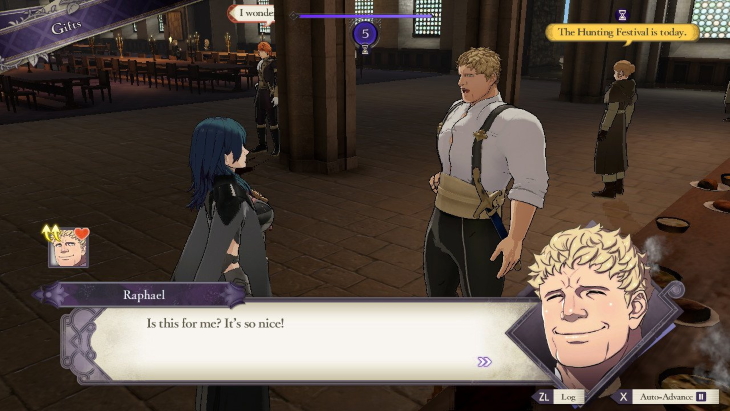
You can find and earn numerous gifts for students, quickly building your relationship. You can even temporarily hire a student from another house to take part in that month’s battles. While they gain no experience, they can still build supports.
Though you can examine your own students’ preferences, you cannot access the same information for other students. Outside of the preview of all houses at the very beginning of the game, you will have to rely on snippets by speaking to them.
This is especially annoying at tea time. Yes, you can invite a student to a personal tea-party. Selecting the correct topics to talk about under a generous time-limit (which you do not actually read or hear) boosts your relationship. Attempting to get a “perfect” tea-party can be surprisingly frustrating.
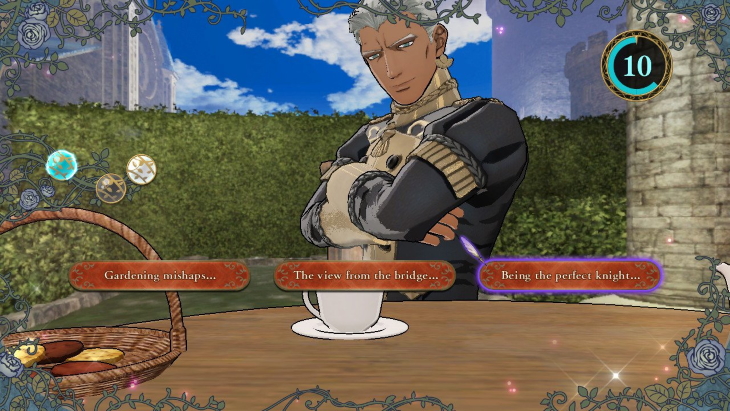
As a warning (without spoilers), certain characters can leave your party. Three Houses has four stories, with a heavily telegraphed choice creating a second path in one story. You do not know those characters could leave when attempting to hire them. Then again, your only requirement to hire them is via the main character’s level being high enough.
The game’s online capabilities are not worth buying a Nintendo Online Pass solely for. Areas where other player’s characters have died can grant items, buffs, exp and even repair weapons. You can also hire other player’s characters to fight along-side you (offering a chance to pass one of their abilities to one of your characters), or buy items from them at a reduced cost. Essentially, paying for mild cheats.
The monastery is sure to be loved or loathed. You do not need to prepare excessively to get the most out of it, though investment into optimization will be rewarded. Slowly opening up your options always brings you back, to the point you can spend all evening playing without a single battle.
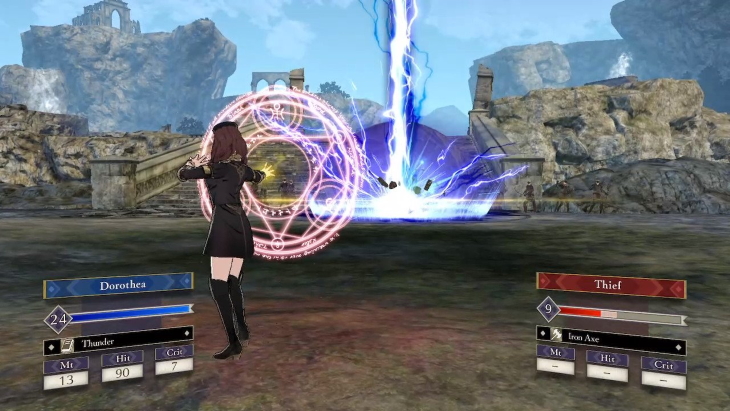
While most animations and visuals in Fire Emblem: Three Houses look nice, the flaws are exposed during cutscenes. Any movement above the neck seems to be stiff, with heads turning robotically to face whoever is talking. Characters of a similar build will share some animations, robbing individuality and character.
There are times the graphics look really ugly. At a glance, everything seems fine. Character designs are interesting (almost making up for many having similar faces), and the monastery looks nice.
Gifts you send to characters can appear in their rooms, and units no longer turn at 90 degree angles in battle. There are even animations for dodging and counter-attacking in one swift movement. Then you look closer.
Some of the texture-work is atrocious, looking like something out of a handheld console from a generation ago. These include blocky stained-glass windows, writing on the chalk-board being pixelated, cats with features blurred out, and muddy ground that looks like brown aluminium foil.
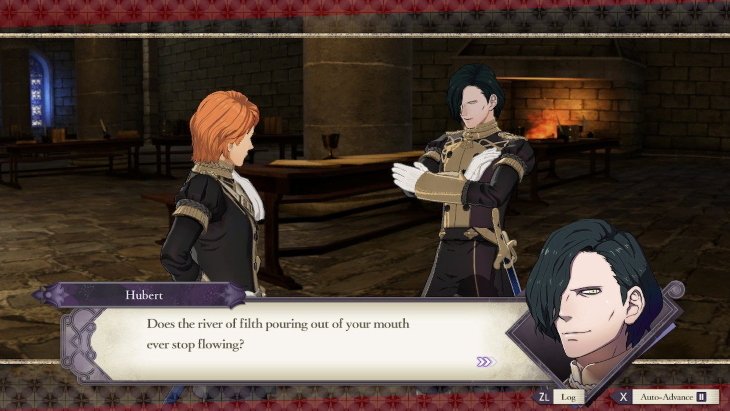
Even stranger, cutscenes take place in an area surrounded by a giant panoramic image for 3D areas in the game. The illusion is quickly broken as the camera rotates, objects appear bent at weird angles, or a roaring fire is perfectly still. Characters with white skin or light hair can also slightly “glow” if the background is particularly dark.
Animations during battles are nice for the most part. While battalions attempt to make you feel like you have a real army, oddities quickly shatter it. When one combatant does not have a battalion, the soldiers will cheer from the side-lines. Then they will flee when their boss dies, running off cliffs like Wile E. Coyote or clipping through trees.
Models are usually fine- albeit hair and even limbs can clip into the bulkier costumes of certain classes. Some minor objects are also criminally low-poly, such as basket of fruit being lumpy box with an image of fruit as the texture.

While people mill around the monastery- there will never be snow, rain, or a windy day. The skybox will always be the same, despite the introduction to each chapter describing the changing seasons.
Most pre-rendered elements look great. The aforementioned monthly introduction shows off a slowly developing painting that never gets old. CGI cutscenes also look nice, albeit suffering the “anime CG” curse and having a lower frame-rate at times.
Speaking of, frame-rate while docked was consistent but barely hitting 30 fps. In handheld, busy maps can have slow-down. The monastery will sometimes need to load in areas- usually if you have just teleported into an area- masked by doors that will not open. It is especially bad around the chapel. While a long bridge is designed to stall, you can easily run across it and have to wait.
When the graphics are bad, they are really ugly. The Switch is capable of far more, and the game looks good otherwise. If you do not usually notice graphical issues, the game’s style still shines through. Though once you do, it makes you question if you are playing a $60.
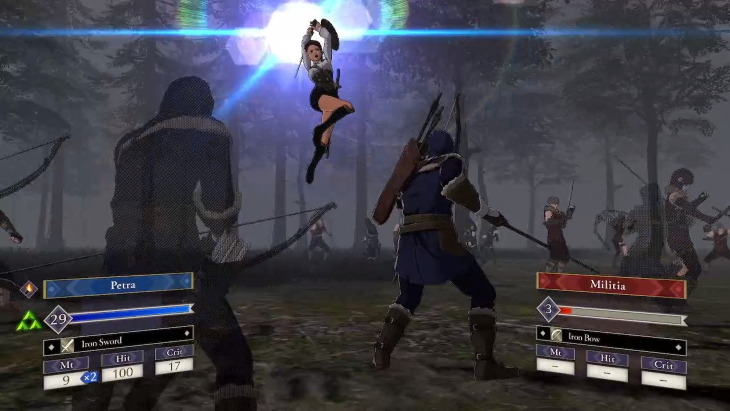
Audio is a far more satisfactory affair. Magic and weapons land with a satisfying impact, while music matches the tone and even shifts between a more intense version when units fight. Even with a few electronic instruments in the otherwise synth orchestral soundtrack, it helps elevate the mood.
Dub voice acting is surprisingly good across the board, with inflictions and subtleties not usually heard in an anime-style dub. Voices that chew the scenery tend to be from characters that do the same in either dub. Japanese audio is included.
The quality even applies for characters who are only a boss for one battle, or the NPCs of the monastery. Characters can even have a slight reverb added to their voice if they are in an echo-y area.
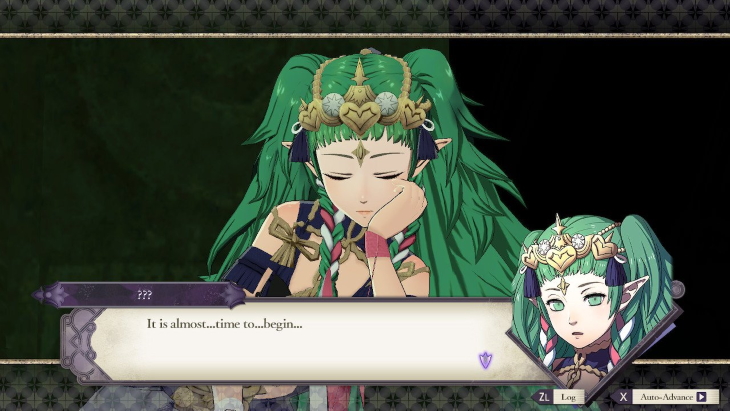
Fire Emblem: Three Houses is another solid addition to the franchise, in spite of its missteps. Even though some graphical elements need improvement, the gameplay is still enjoyable, with new features that do not work being inoffensive or down to personal taste. The story brings back political intrigue, and characters that feel more real – for the most part.
Some will love it, and some will hate it. If you are halfway between the two, I honestly feel there is more chance you will like it. Love, Hate, and Maybe. While houses are sure to be divided, two out of three ain’t bad.
Fire Emblem: Three Houses was reviewed on Nintendo Switch using a review copy provided by Nintendo. You can find additional information about Niche Gamer’s review/ethics policy here.